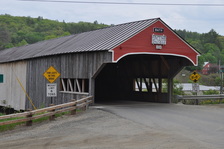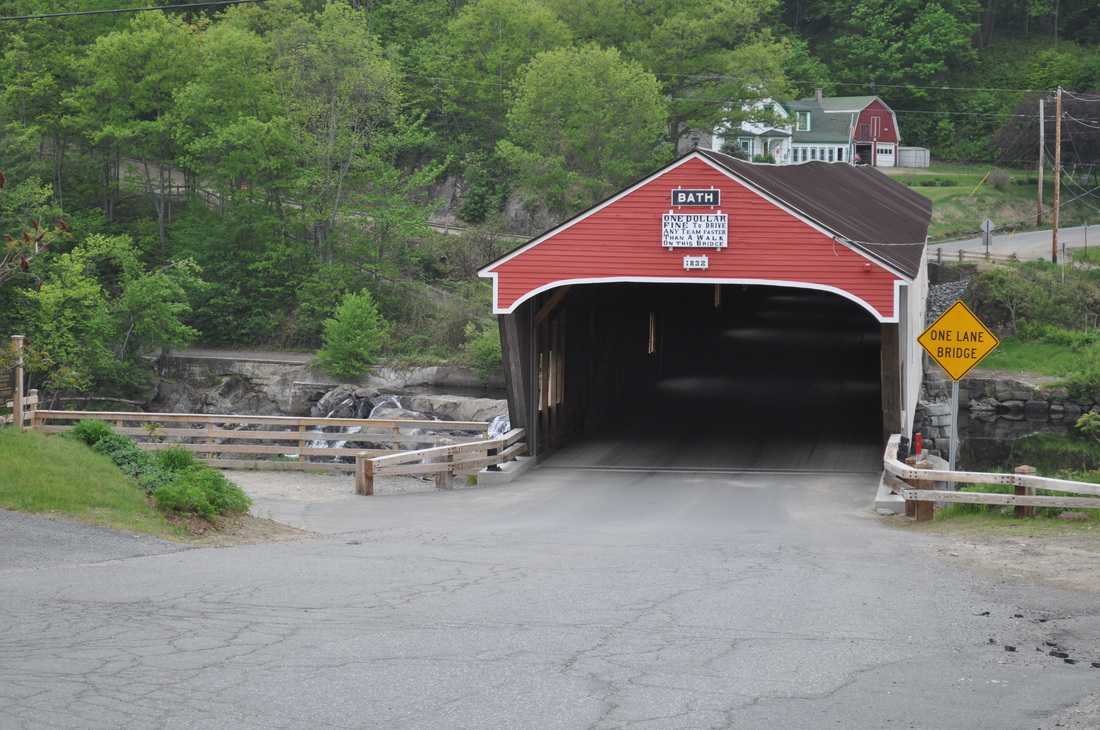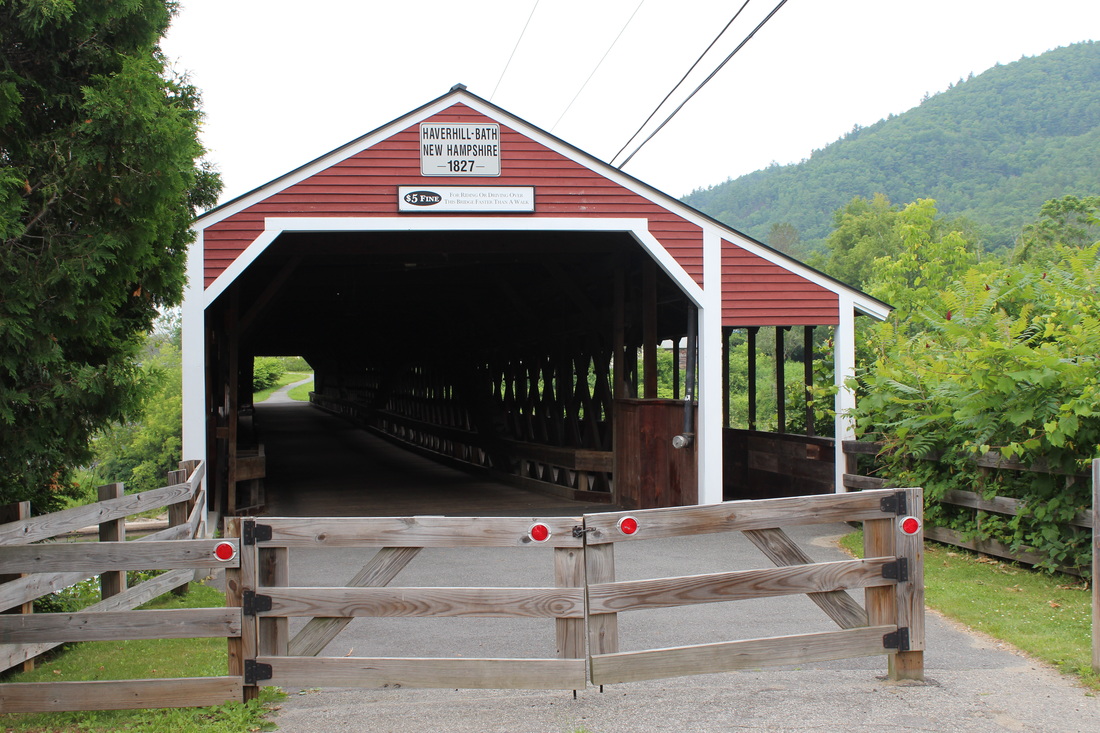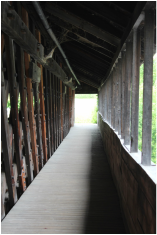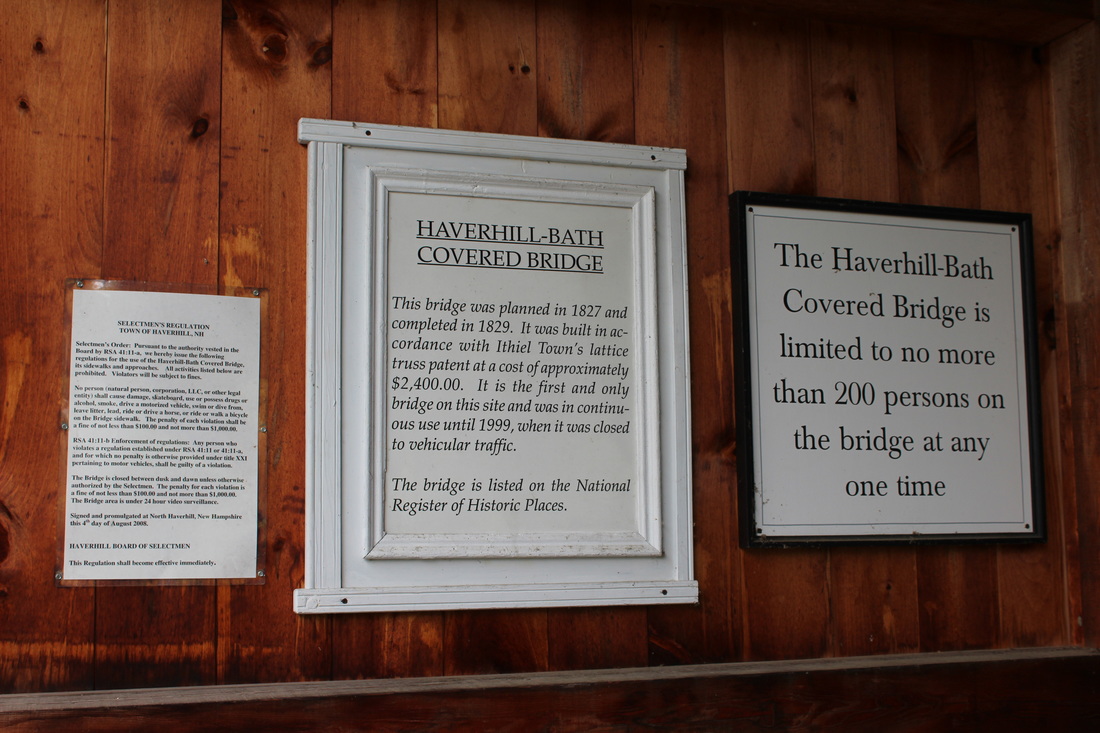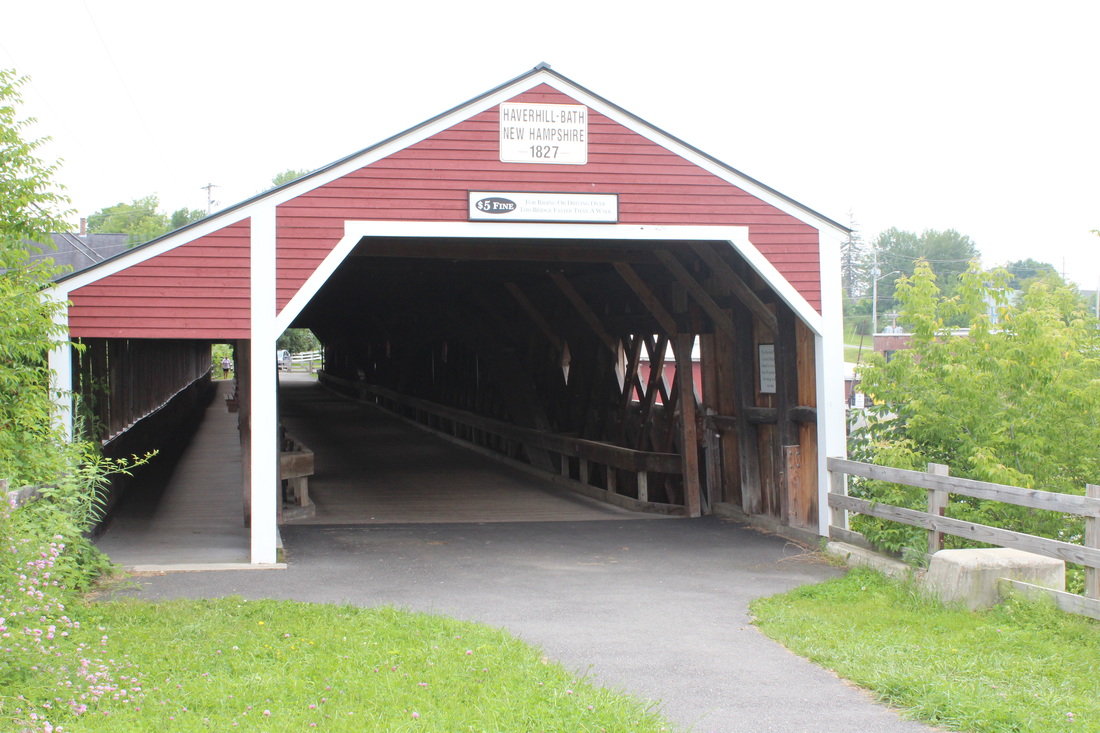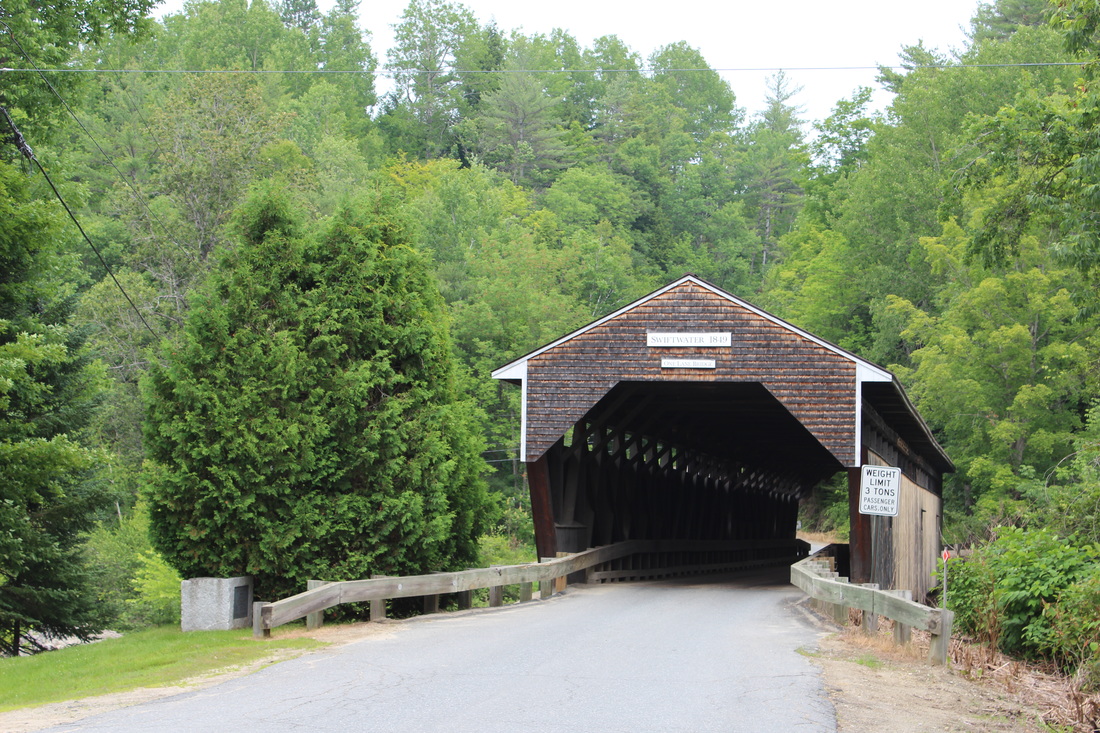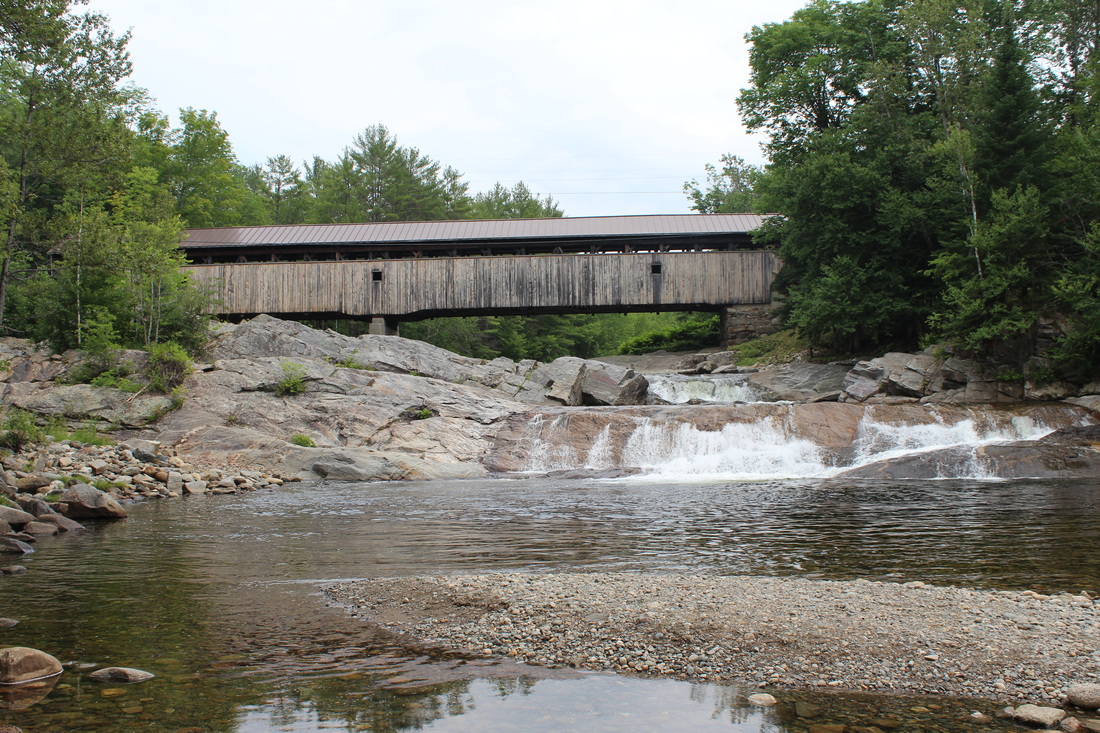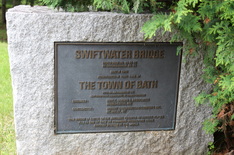Bath: A Short History
|
Covered BridgesBath Bridge
The Bath Covered Bridge in the center of Bath Village connects Route 302/10 to West Bath Road and Pettyboro Road. The current structure is the fifth bridge to stand on this site. The first was constructed in 1794 at a cost of $366.66. That bridge was demolished by a flood and replaced in 1806 at a cost of $1,000. The second and third bridges were also destroyed by floods but immediately replaced in 1820 and again in 1824. The fourth bridge was destroyed by fire in late 1830. Rebuilding efforts began in March 1831 when $1,400 was allotted to cover the construction of two stone abutments and piers along with the purchase of other materials. In March 1832, an additional $1,500 was allotted to complete the construction. It appears that the fifth bridge was completed by early 1832. When it was first built, the bridge had hewn arches. New overlapping arches were added when the bridge was raised over the railroad in 1920. At one time, there was a sign posted at the bridge which prohibited riding horses across the bridge at a trot. It was believed that the impact of trotting horses could cause the structure to fall apart. The Bath Bridge underwent major renovations from
The Bath Bridge is listed on the National Register of Historic Places. Bath-Haverhill Bridge The Bath-Haverhill Bridge is located in Woodsville Village on Route 135 over the Ammonoosuc River. According to New Hampshire Department of Transportation records, this is the oldest covered bridge in New Hampshire. It is the first and only bridge to be erected at this site. In March of 1827 the voters of Bath appointed a committee to hold discussions with the selectmen of Haverhill regarding the site of a bridge between the two towns. In September of 1828 the town of Bath set aside $300 to purchase stone and timber for a bridge. In March 1829, Ariel Miner was given the position of superintendent, but upon his request in June of that year he was released from this position and replaced by Moses Abbott and Leonard Walker. The bridge was completed later in the year. In 1973 it was repaired art a cost of $38,710. Ice damaged the structure in the winter 1980 and the bridge was repaired by the state in March of 1981 at a cost of $8,000. Someone unsuccessfully attempted to burn it on the night of September 11, 1983. The citizens of Bath and Haverhill mounted a fund drive to repair the bridge, which was rededicated in 2008 and opened to foot traffic. The Bath-Haverhill Bridge is listed on the National Register of Historic Places.
Swiftwater Bridge
This bridge is the fourth to cross the Wild Ammonoosuc River at this site. The first was built in 1810. It was carried away in 1818 by a flood and replaced in the same year. Again, the bridge was destroyed by a flood in 1828. The third bridge was erected in 1829 and remained at the site until 1849. At that time it was dismantled and replaced by the current bridge. This bridge was rebuilt by the state in 1977 at a cost of $34,347. The rebuilding costs were shared by the state and town. This section of the river was used to float logs to the sawmill. Often log jams presented a hazard to the bridge. In one case, dynamite was used to break up a log jam and although the blast was successful, logs had to be removed from the roof of the bridge. The Swiftwater Bridge is listed on the National Register of Historic Places.
Information taken from New Hampshire Covered Bridges Compiled and edited by Richard G. Marshall Chief System Planning New Hampshire Department of Transportation Color photographs by Arthur F. Rounds 1994 |
Bath, NH
